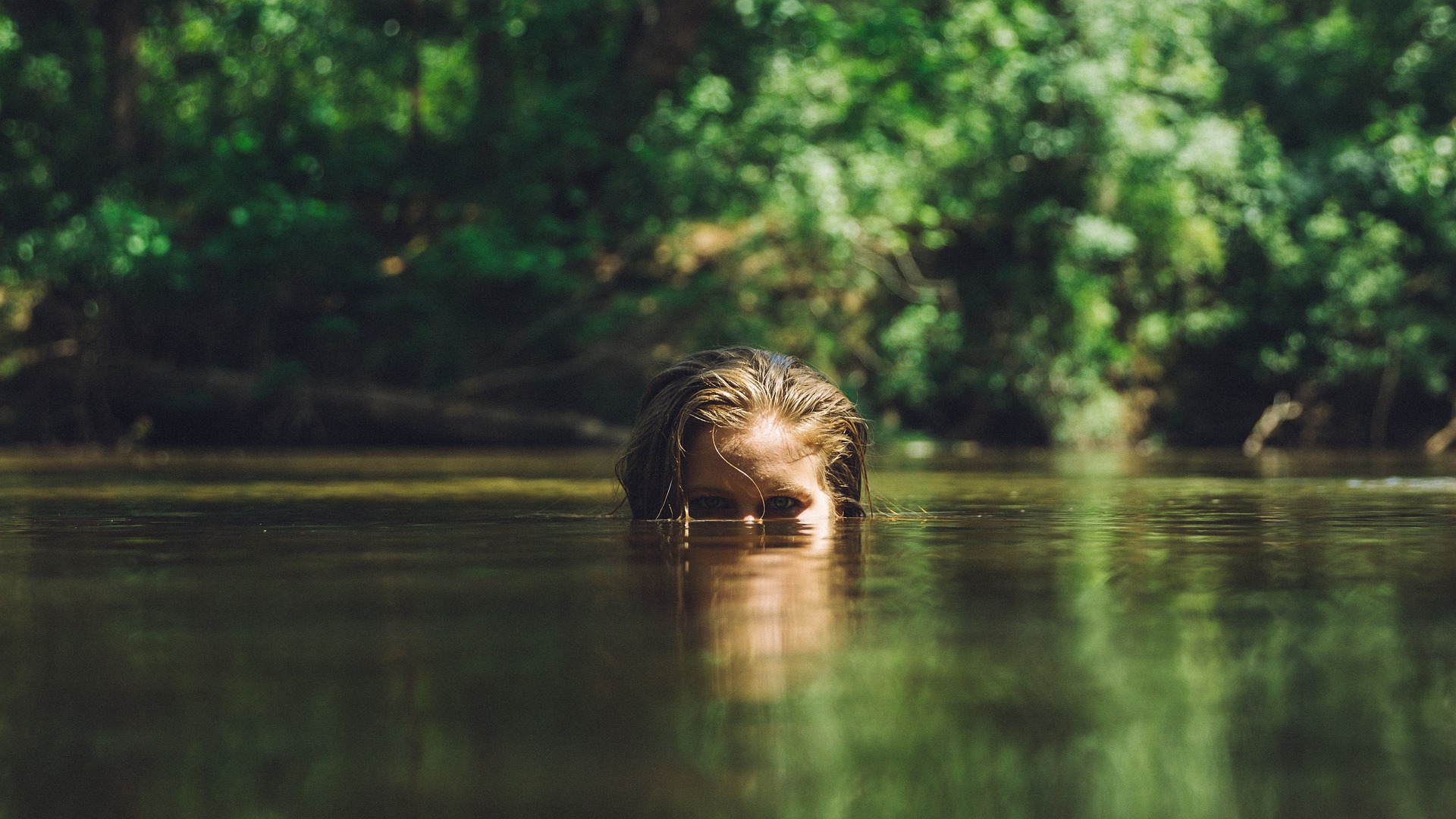
Bathing in rivers and lakes is more than just a refreshing dip; it’s a ticket to nature’s waterpark and playground. But before you dive in, you need to remember that these bodies of water are dynamic, and your boho bathing can quickly become a serendipitous swim for unforeseen reasons if you’re not prepared.
In this wild swimming guide for women, we’ll look at seven things you should know to stay safe and enjoy your aquatic adventure to the fullest. Let’s make your next wild swim unforgettable for the right reasons!
1. Safety First: Assessing the Environment

Safety is paramount when swimming in natural waters. There are many variables to consider, and waterbodies require a healthy dose of respect. Not adhering to safety guidelines can lead to accidents, injuries, or health issues.
When assessing whether you’ve found a good swimming spot, look for strong currents, slippery rocks, and hidden underwater obstacles that can turn a fun swim into a dangerous situation. Fishing hooks, sharp rocks, and ominous-looking creatures are all red flags.
Instead, look for spots with gradual slopes and clear water to minimize risks. Remember to scout the area for posted signs and ask locals about hazards, such as gators or contaminated water that may not be indicated by signs.
2. Water Quality: Know Before You Go
Before you plunge into that inviting lake, do a water-quality check using your senses:
-

Image by Paul Brennan from Pixabay Look out for signs of pollution and what kind it is, such as oddly colored water, foam, or a barrel marked “Toxic.”
- Smell if the water is ok and not funky.
- Listen for turbulent water or disturbances in or around the water. You won’t get Jaws sound effects to warn you of impending danger, but listening to environmental changes can be beneficial.
- Suppose you taste the water while swimming, and it tastes like chemicals or is foul. In that case, you should rethink swimming and avoid drinking it.
- Touch the water to feel its temperature and see if it has any oily residue in it. It’s normal for natural water to have tannins and plant oils. Still, if it forms an oily layer on your skin, it might indicate the water is contaminated.
Use resources like local health or nature department websites or apps that provide water quality reports and advisories; a quick search can save you from a nasty surprise.
3. Avoiding Waterborne Illnesses and Parasites: Is that Water Sanitary?
Watch out for waterborne diseases like giardiasis, which can cause diarrhea and stomach cramps, and E. coli, which can lead to hideous stomach cramps, diarrhea, and vomiting.
Prevent infection by avoiding swallowing water and covering open wounds with waterproof bandages. Avoid swimming in stagnant waters, too, as they sometimes harbor waterborne parasites that can affect your health.

4. Wildlife Awareness: Coexisting with Nature
Swimming in rivers and lakes means sharing the water with local wildlife. Stay aware and watch where you step to avoid interfering with wild animals.
Remember, most snakes want to be left alone, so if you see one, back away slowly and quietly. Use bug repellent to deter bugs; killing everything threatening your whimsical wade in the water is unnecessary.
Respect habitats by not disturbing plants or animals, as this will ensure a safe and enjoyable experience for everyone.
Remember, you’re a guest in their home, so act accordingly.
5. Local Laws and Customs: Respecting Rules and Traditions
Before you take a dip, understand and follow local laws and customs. I can attest to this from personal experience. On a trip to Africa, I was almost arrested for swimming in a local tribal king’s drinking water—I had no idea the dam was off-limits!
Rules can vary between states and regions, meaning what’s allowed in one lake may be forbidden in another. Check online resources or contact local authorities for information on regulations and traditions.
Ignoring these can lead to fines or worse. However, respecting local customs, like designated swimming areas and seasonal or sacred restrictions, shows courtesy and puts you on good terms for a warm welcome back. Stay informed, respect the rules, and enjoy your swim without legal hiccups.
6. Temperature Check: Too Hot, Too Cold, or Just Right?
Ice baths or cold thermogenesis may have many health benefits, but it can also be dangerous. Cold water can quickly sap your energy, leading to hypothermia. Look out for shivering, confusion, or blue lips—these are your body’s distress signals.
Water from hot springs can also threaten your well-being, as it’s hotter than your body temperature and can lead to feelings of feverishness, including dizziness and even dehydration.
Dip your toe into the water to acclimate and decide whether to swim. If it’s too hot or cold, and you simply must get in, keep it short and ensure you have a friend on standby.
7. Environmental Respect: Leave No Trace Principles

When enjoying rivers and lakes, follow the Leave No Trace principles. This helps to preserve the area’s natural beauty for as long as possible. Here are some tips:
- When you leave, take all your possessions and litter, including trash, food wrappers, and even biodegradable items.
- Stick to designated trails and swim areas to protect the local flora and fauna.
- If you spot litter, pick it up; leaving a place cleaner than you found it is a badge of honor.
- Avoid using soaps and shampoos that can harm aquatic life.
- Respect wildlife by maintaining your distance and not disturbing their habitats.
By taking responsibility for and minimizing your environmental impact, you can ensure these natural spots remain pristine for everyone to enjoy.
Ready to Make a Splash?
If you’re an adventurous women traveler, you’ll love the joy and benefits of wild swimming. Taking a dip in a pristine river, bathing under a waterfall, or splashing about in a lake is a wonderful way to get closer to nature and yourself!
Have your say on bathing in rivers and lakes
Do you have any other tips you would like to add? Please share your thoughts or experiences in the comments below.

Jill Goodwin
Jill Goodwin, a seasoned wordsmith and avid outdoor enthusiast, skillfully weaves her passion for adventure into the fabric of her captivating storytelling. Accompanied by her loyal Australian Shepherd, Finn, Jill’s content springs to life, immersing readers in the untamed beauty of landscapes and the spirit of exploration.














Leave a Reply